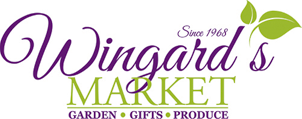By Kathy Torres
 So… Here we are in the “dog days” of summer when it’s hot and dry and hard to get motivated to get out in the yard that we were so devoted to in spring. We just want to sit by the pool and sip on a nice, cold drink, right? Unfortunately, it’s the time of year when disease, pests, and weeds begin to affect the beauty of the landscape, and we have to muster up the will to take care of a few problems. For example: Our gorgeous rose bushes were just attacked by japanese beetles (they visited in June); the foliage on the azaleas is being eaten; the crape myrtle has powdery mildew; and brown patch is beginning to rear its ugly head, along with nutsedge in the lawn. Hopefully, you don’t have all of these issues, but it’s likely you’ve “been there, done that” with at least one of them.
So… Here we are in the “dog days” of summer when it’s hot and dry and hard to get motivated to get out in the yard that we were so devoted to in spring. We just want to sit by the pool and sip on a nice, cold drink, right? Unfortunately, it’s the time of year when disease, pests, and weeds begin to affect the beauty of the landscape, and we have to muster up the will to take care of a few problems. For example: Our gorgeous rose bushes were just attacked by japanese beetles (they visited in June); the foliage on the azaleas is being eaten; the crape myrtle has powdery mildew; and brown patch is beginning to rear its ugly head, along with nutsedge in the lawn. Hopefully, you don’t have all of these issues, but it’s likely you’ve “been there, done that” with at least one of them.
The heat and humidity are culprits, for sure, and, when combined with overhead watering, can encourage fungus on shrubbery. A drip system, which waters beneath the foliage, is best. Other than proper watering, there are additional things you can do to minimize fungus problems. Prune inner branching on dense shrubs to provide air and light (best in early spring), especially roses. Remove any “sickly” foliage that has fallen to the ground to prevent the spread to other plants. Look for plant varieties that are disease resistant.
A lawn care program (Wingard’s has one! Click HERE) will go a long way to eliminate weeds in your grass, but a few persistent ones may pop up. Nutsedge and Chamberbitter are very hardy, aggressive weeds appearing in summer. Of course, overhead watering is the only way to water the lawn, however, watering too much can bring on the fungus. Typically, 1 inch of water per week is sufficient for most southern grasses.
Warm weather invites a variety of insects to visit the garden, many of them beneficial, however, some control may be necessary to avoid damage to foliage and fruit. You don’t want to harm the good insects, so make a practice of using organic products or apply pesticides in the early morning before bees are flying.
When faced with all of these challenges, it becomes necessary to take action, (1) to maintain the health of plants and lawn, (2) to protect fruits and vegetables so they can be harvested and (3) to preserve the beauty of the landscape. Many organic and chemical products are available, but it’s important to choose the right one and apply it correctly, potentially more than once. Be aware when choosing what to use on edibles. Some products are safe for your vegetable garden and fruit trees, but NOT all of them, so be sure to read your labels. Requirements relative to temperature are extremely important during the summer. Don’t use oils when the temperature is above 85 degrees, and for those products that can be used in the heat, apply in early morning or evening. ALWAYS read the label carefully and following instructions as indicated.
It can be quite overwhelming finding your way through the Medicine Chest of products available to solve these problems. CONTACT products are available and will have an immediate effect. SYSTEMIC products are absorbed into the root system or the foliage and take a little longer, but are very effective, and can often be applied as a preventive method. At times it may be necessary to use both a CONTACT and a SYSTEMIC product to eliminate the problem if it is severe. We have developed a few CHEAT SHEETS to provide recommendations on product use in dealing with insects, fungus and weeds. Click on the links below to access them. As always, you can rely on staff at Wingard’s to answer any questions you may have, to help you through the problems and keep your landscape at its best.
CLICK HERE for INSECTS
CLICK HERE for FUNGUS
CLICK HERE for LAWN PROBLEMS

